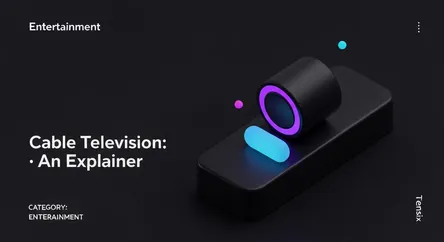Entertainment
Cable Television: An Explainer

Explore the history of cable television, its decline in the age of streaming, and how 'cord-cutting' is reshaping how we consume media.
What is it?
Cable television is a system that delivers television programming to subscribers through radio frequency signals transmitted via coaxial or fiber-optic cables. Originating in the late 1940s to serve communities with poor over-the-air broadcast reception, it evolved into a massive industry offering hundreds of specialized channels. Unlike broadcast television, which is free, cable TV operates on a subscription model, often bundling channels into tiered packages.
Why is it trending?
The term 'cable television' is trending largely due to its decline, a phenomenon known as "cord-cutting." Viewers are increasingly abandoning traditional, expensive cable packages for more flexible and affordable on-demand streaming services like Netflix, Hulu, and Disney+. The high cost of cable, coupled with the convenience and vast content libraries of streaming platforms, has accelerated this shift. This trend signifies a major disruption in the media landscape, forcing legacy companies to adapt or become obsolete.
How does it affect people?
This transition fundamentally changes how people consume entertainment. It offers viewers greater control, allowing them to choose specific services and watch content on their own schedules across multiple devices. However, it also leads to a fragmented experience, sometimes requiring multiple subscriptions to access desired shows that were once available in a single cable package. This has fueled the "streaming wars," as companies compete for subscribers, creating a complex and ever-changing digital media environment.